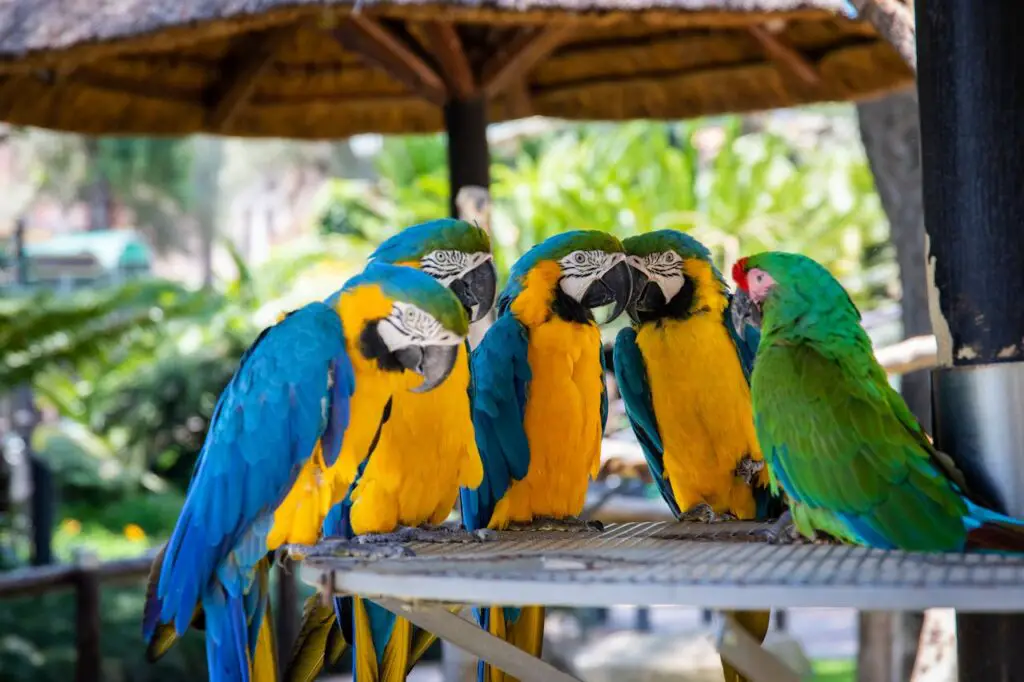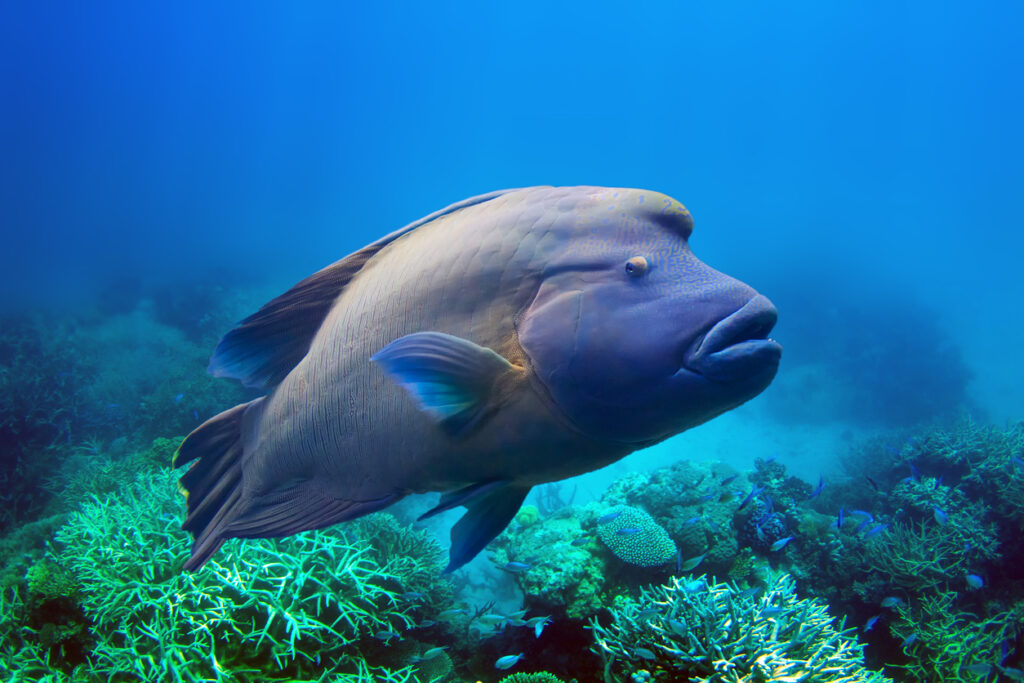1. Chimpanzees

Chimpanzees, our closest genetic relatives, are master tool users. According to Research, they’ve been observed using sticks to fish termites out of mounds, rocks to crack open nuts, and leaves as sponges to collect water. This level of ingenuity isn’t just about survival; it also points to cultural learning, as young chimps watch and mimic older members of their group.
Each troop may even have its own unique “tool culture,” passing down knowledge through generations. What makes chimps especially fascinating is their ability to plan ahead. For example, some chimps have been known to stockpile stones to use later as projectiles for defense or intimidation. Their resourcefulness demonstrates the cognitive bridge between humans and other animals. Source: britannica.com
2. Dolphins

Dolphins, particularly in certain populations, have developed a fascinating tool-using strategy. According to a study, female bottlenose dolphins in Shark Bay, Australia, use marine sponges as protective coverings for their snouts while foraging on the seafloor. This behavior, known as “sponging,” helps them hunt for fish hiding in the sand without injuring themselves on sharp rocks or coral. Even more remarkable is how this behavior is passed down from mother to daughter, indicating cultural transmission in dolphin societies. This form of tool use highlights their advanced problem-solving abilities and social learning. Source: nature.com
3. Elephants

Elephants are renowned for their problem-solving skills and use of tools. They’ve been seen using hose water to bathe, digging holes to access water, and even plugging those holes with bark to save the water for later. These gentle giants also use sticks to scratch hard-to-reach areas, showcasing their resourcefulness. What sets elephants apart is their emotional intelligence. According to the research, they demonstrate empathy, cooperation, and even grief traits that complement their tool use. Observing elephants reminds us that intelligence is multi-faceted and that animals, like humans, use their skills not just for survival but for comfort and social bonding. Source: globalelephants.org
4. Sea Otters

Sea otters are often seen floating on their backs, using their bellies as tables while they crack open shellfish with rocks. This behavior is not only adorable but also highly effective. According to studies, sea otters select specific rocks that fit well in their paws, using them repeatedly to hammer open tough shells like those of clams and mussels. Some even have favorite tools they carry with them, tucking them under their armpits while swimming.
This remarkable tool helps sea otters maintain their high caloric intake, which is essential for surviving in cold waters. Beyond their cleverness, sea otters play a vital role in maintaining the health of kelp forest ecosystems by preying on sea urchins, which can otherwise overgraze kelp, offering valuable lessons about resilience and the interconnectedness of life in marine ecosystems. Source: en.wikipedia.org
5. Crows

Crows are among the most intelligent birds, often compared to primates for their tool-using skills. They’ve been observed bending wires to create hooks, dropping nuts onto roads to crack them open, and even using leaves to extract insects from crevices. These birds are not just improvising; they are demonstrating foresight and adaptability.
One of the most famous examples of crow intelligence comes from experiments with New Caledonian crows. These birds can solve multi-step puzzles that require using one tool to retrieve another. Their ability to think ahead and understand cause-and-effect relationships is a testament to the complex minds of avian species. Source: abcnews.com
6. Octopuses

Octopuses are renowned for their intelligence, and their tool use only adds to their mystique. One of the most famous examples is their use of coconut or oyster shells as portable shelters. Octopuses in Indonesia have been observed carrying coconut halves across the ocean floor, assembling them into a makeshift hideout when threatened. This behavior demonstrates foresight, as the shells are collected and transported long before they are needed. Their intelligence extends beyond tool use. Octopuses can solve complex puzzles, navigate mazes, and even escape from aquariums. Their ability to manipulate objects with their flexible arms and learn from experience highlights the depth of their cognitive abilities.
7. Orangutans

Orangutans are highly skilled tool users, often crafting their own tools to suit specific needs. In the wild, they’ve been observed using sticks to extract insects or honey from tree trunks, as well as creating leaf gloves to handle spiny fruits like durians. This behavior showcases their ability to adapt to their environment with creativity and resourcefulness. What’s even more fascinating is their ability to learn through observation. Orangutans in captivity have been seen mimicking human actions, such as using soap to wash clothes or even using tools to unlock cages. Another behavior highlighting their incredible cognitive flexibility and curiosity.
8. Ants

Ants might be tiny, but their collective intelligence is astounding. Some species use tools to improve their efficiency in foraging. For example, leaf-cutter ants harvest leaves to cultivate fungus, which serves as their primary food source. Other ants have been observed using sand or small pebbles to absorb liquids from food sources, making it easier to transport back to their colonies. These ants also craft tiny sponges from materials like paper or sponge to soak up honey or other liquids, demonstrating their ability to select the most effective tools for the task at hand. The cooperative nature of ants sets them apart in the tool-using world. Each individual works as part of a larger system, showcasing the power of teamwork and division of labor.
9. Beavers

Beavers are perhaps the most famous animal engineers. Using their strong teeth, they fell trees and constructed intricate dams and lodges. These structures create ponds that serve as protective habitats, providing safety from predators and a stable environment for raising their young. Beavers’ ability to manipulate their surroundings is unmatched in the animal kingdom. They start by diverting streams to reduce water flow pressure, then drive branches and logs into the streambed to form a solid base for their dams. Their dams also have a significant impact on ecosystems, helping to regulate water flow, prevent soil erosion, and create wetlands that support diverse wildlife. Beavers demonstrate how tool use and environmental engineering can benefit the entire ecosystems.
10. Parrots

Parrots, especially species like the kea, have shown an impressive ability to use tools. In captivity, they’ve been observed using sticks to reach food or even solving puzzles that require manipulating objects. This behavior reflects their high intelligence and curiosity, traits that make parrots some of the most fascinating avian species. In the wild, parrots are also known for their problem-solving abilities, such as peeling bark to access hidden insects. Their playful nature often leads to creative interactions with their environment, showcasing the link between play and learning. Parrots’ intelligence and adaptability highlight the importance of enriching their habitats, both in the wild and in captivity.
11. Woodpecker Finches

Woodpecker finches, native to the Galápagos Islands, are known for their ingenious use of tools. These birds use twigs or cactus spines to extract insects from tree bark, a behavior that requires precision and problem-solving skills. Their ability to modify tools to better suit their needs demonstrates a level of innovation rare in the animal kingdom. This tool use is thought to be an adaptation to the islands’ challenging environment, where food sources can be scarce. The finches’ resourcefulness provides a glimpse into how animals evolve to overcome environmental challenges. Studying these birds offers valuable lessons about innovation and resilience in the face of adversity.
12. Wrasses

Wrasses, a family of colorful reef fish, have been observed using rocks as anvils to crack open hard-shelled prey like sea urchins. This behavior is particularly notable because tool use in fish was once considered unlikely. Wrasses demonstrate that intelligence and problem solving are not limited to land-dwelling creatures. Their tool use challenges traditional notions of cognitive ability in fish, suggesting that intelligence may be more widespread in the animal kingdom than previously thought. By studying wrasses, researchers are uncovering new insights into the evolution of tool use and problem-solving in aquatic environments. These discoveries highlight the importance of protecting marine biodiversity to continue learning from these incredible creatures.
13. Gorillas

Gorillas, like their primate relatives, are skilled tool users. In the wild, they’ve been seen using sticks to gauge the depth of water or as makeshift bridges to cross streams. Female gorillas have also been observed using leaves to create comfortable seating or to shield themselves from rain. These behaviors reflect their ability to adapt their surroundings to meet their needs. The intelligence of gorillas is further showcased in their social interactions and ability to learn from one another. Their use of tools highlights the shared cognitive abilities of primates and underscores the importance of preserving their habitats. As we continue to these animals, they remind us of the to protect our shared natural heritage.


